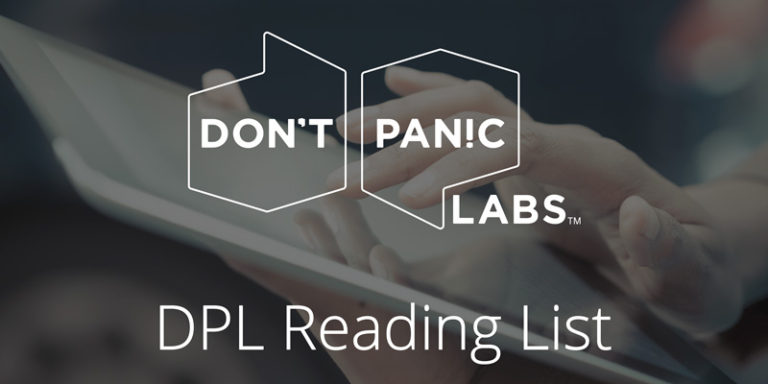DPL Reading List – September 4, 2015
Here are some of the articles we’ve been reading around this office this week.
Technology Has Created More Jobs Than It Has Destroyed, Says 140 Years Of Data – “In the 1800s it was the Luddites smashing weaving machines. These days retail staff worry about automatic checkouts. Sooner or later taxi drivers will be fretting over self-driving cars. The battle between man and machines goes back centuries. Are they taking our jobs? Or are they merely easing our workload?”
What Happens When You Get Sued For Your Inaccessible Website (Thanks to Jarrod Wubbels for recommending this article) – “At almost every client I’ve had, there’s been at least one person inside the company – either through passion or because it was their job role – advocating for accessibility. That internal person has been saying the same things I’ve said above and elsewhere on this blog for years and haven’t gotten any traction.”
If I Burn Out, I Burn Out’: Meet Taylor Wilson, Nuclear Boy Genius (Thanks to Ben Reis for recommending this article) – “There are perks to being the smartest person in the room. But if you’re processing thoughts others may not grasp, do you conceal them and go with the flow – or let rip? For Wilson, this triggers a battle between his newfound humility and his innate ebullience. An unequal contest. ‘Often when meeting new people, I make an effort to not talk about science and not say who I am,’ he says. Wilson sighs and smiles. He’s a man now, but he will always be the boy who built a nuclear reactor in his parents’ garage. Why conceal it?”
Elon Musk: The World’s Raddest Man – “This guy has a lot on his mind across a lot of topics. In this one lunch alone, we covered electric cars, climate change, artificial intelligence, the Fermi Paradox, consciousness, reusable rockets, colonizing Mars, creating an atmosphere on Mars, voting on Mars, genetic programming, his kids, population decline, physics vs. engineering, Edison vs. Tesla, solar power, a carbon tax, the definition of a company, warping spacetime and how this isn’t actually something you can do, nanobots in your bloodstream and how this isn’t actually something you can do, Galileo, Shakespeare, the American forefathers, Henry Ford, Isaac Newton, satellites, and ice ages.”
Prototyping With Xcode, Part 1 (Thanks to Jarrod Wubbels for recommending this article) – “Xcode intimidates us because we think using Xcode means writing code. In fact, Apple has worked for years at making it easier to construct simple apps that require almost no custom code at all. Thanks to Interface Builder’s storyboards, you can lay out your app visually, customize controls, and connect navigation elements to their intended destinations.”
This Modular Touchpad May Be the Future of Input Devices – “Using 20,000 pressure sensors embedded in its 9-by-5-inch touch zone, the Morph can sense the location and force of up to 16 different points of pressure on its surface. You don’t have to use special styli or your fingers, either. The precise pad can sense the difference between types of paint brushes, the difference between a finger and a drumstick, or a soft press and a hard hammer on a piano keyboard. It’s also big enough to use with two hands.”
Decoding Tesla’s Secret Formula – “High-end disruptors produce innovations that are leapfrog in nature, making them difficult to imitate rapidly. They outperform existing products on critical attributes on their debut; they sell for a premium price rather than a discount; and they target incumbents’ most profitable customers, going after the most discriminating and least price-sensitive buyers before spreading to the mainstream. If you look within some large companies, you can flesh out previous examples: Apple iPod outplayed the Sony Walkman; Starbucks’ high-end coffee drinks and atmosphere drowned out local coffee shops; Dyson’s vacuum cleaners now have solid market share; Garmin’s GPS golf watches have taken much of the business from range finders. The incumbents didn’t react fast enough, and the high-end disruptors took over their market.”



